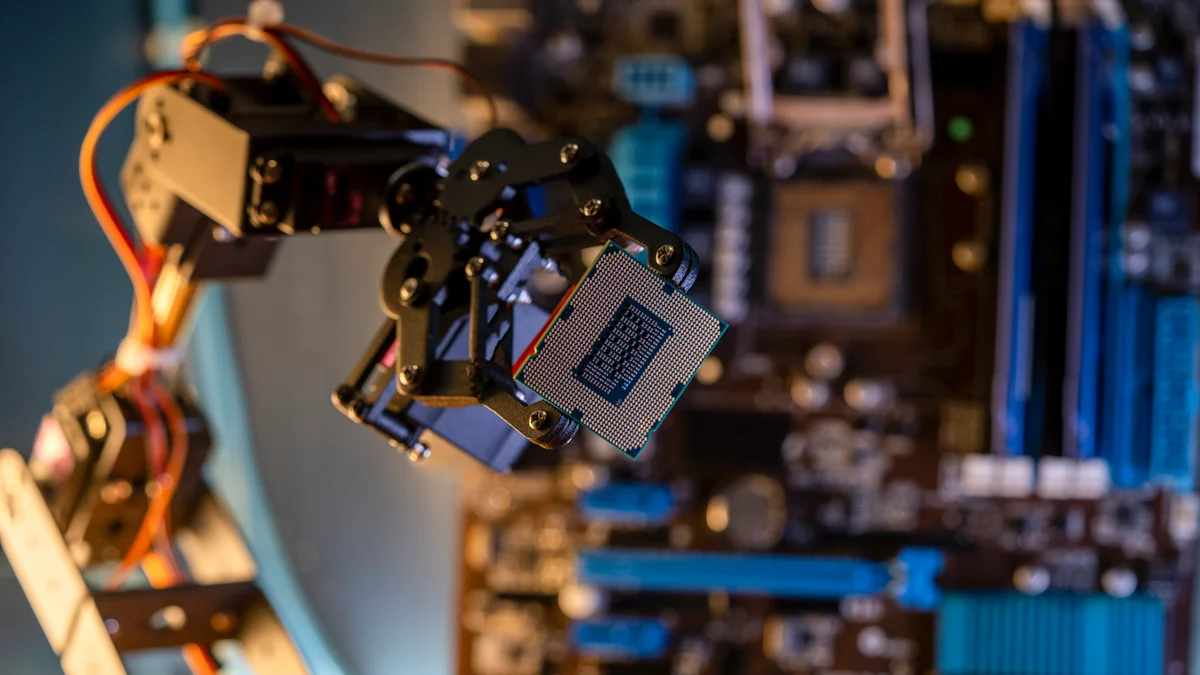
Well into the 20th century, only sensors governed by the principles of classical physics were used. With the advent of quantum theory in the 1920’s, this set in motion a new quantum age. By the 1950’s, the first practical application of quantum sensing came into reality in the form of atomic clocks, which measure time by monitoring atomic resonant frequencies.
Today, cutting-edge quantum technology is revolutionising the sensor industry. Not only are sensors becoming smaller (and, in turn, more portable and accessible), they are also delivering improved sensitivity and measurement precision.
How? By harnessing the weird and often counter-intuitive properties of quantum mechanics. A prime example is quantum entanglement – the phenomenon that occurs when a pair of particles (e.g. electrons) interact with one another and become entangled, such that properties (e.g. spin) of one particle depend on the properties of the other particle, even when separated.
Due to how extremely sensitive quantum states are to minor changes in the environment, quantum sensors can detect various physical properties with high precision, from magnetic, electric and gravitational fields, to temperature, rotation and pressure.
But what are the key areas of innovation to watch out for? We pick our top three.
1. Bioimaging
Due to their high sensitivity, quantum sensors are a huge step forward in providing non-invasive bio-imaging. Magnetometers are quantum sensors that measure magnetic fields or dipole moments. Of particular interest are optically pumped magnetometers (OPMs), which can be incorporated into
headwear to provide wearable brain scanners.
OPMs operate by detecting magnetic fields associated with brain activity. The proximity of the sensors to the brain should lead to unrivalled spatial resolution and sensitivity. Moreover, where techniques such as MRI require subjects to be localised within a chamber, OPMs are wearable and non-invasive, without the same location restrictions.
In practice, this will likely provide unprecedented access for harvesting neurological data, as subjects can, in principle, move around freely and perform various tasks.
2. Geographical surveying
Atom interferometers are devices that use atoms to measure very small changes in the environment (such as gravity, rotation and distance) by splitting a beam of atoms into two parts and then recombining them. When the two parts meet again, they create a pattern that shows how much they have shifted from each other.
This shift is caused by the atoms acting like waves, which can bend or stretch depending on what they encounter along the way. As atom interferometers are particularly sensitive to accelerations and rotations, they provide the opportunity for non-invasive detection.
With the capability to detect subterranean objects, these sensors are expected to change the face of geographical surveying, from gas and oil mining to archaeological digs.
3. Navigation
Another key area to watch out for in atom interferometry is in inertial navigation. Atom interferometers such as quantum accelerometers and gyroscopes are predicted to feature heavily in defence. With the potential to remove the reliance of navigation on external references such as GPS, these quantum sensors are likely to reshape navigational tools by improving accuracy and security, particularly for submarines.
Why action is key
Although perhaps not as well-known as the other quantum technology sectors of quantum computing and quantum communications, the quantum sensing market is booming. Current valuations project that the market value for quantum sensors will grow in the next 10 years by more than 15 per cent from its 2022 value of USD $270 million to well over USD $1 billion. Some projections go even further, with a value of USD $5 billion by 2030.
With the announcement of its new national quantum strategy, the UK government has primed the UK as a key commerce hub for quantum sensing technologies. The policy commits £2.5 billion to developing quantum technologies in the UK from 2024-34 and includes a number of ambitious missions to have commercial devices up and running in the next six years
These include:
- By 2030, every NHS Trust will benefit from quantum sensing-enabled solutions, helping those with chronic illness live healthier, longer lives through early diagnosis and treatment.
- By 2030, quantum navigation systems, including clocks, will be deployed on aircraft, providing next-generation accuracy for resilience that is independent of satellite signals.
- By 2030, mobile, networked quantum sensors will have unlocked new situational awareness capabilities, exploited across critical infrastructure in the transport, telecoms, energy and defence sectors.
In view of this policy and investment, we expect quantum sensors to be one of the fastest-growing markets in the UK and beyond. As patent filings increase, now is the time to secure a place in the quantum sensing market.
How? Through the power of intellectual property rights, a crucial tool for attracting investment – after all, innovation requires capital, and significantly so in the case of the research-intensive field of quantum sensing.
With our expertise in quantum technologies and the commercial landscape, HGF can help you capitalise on your innovation. If you have an innovation or would like to discuss any other IP matters, please reach out to our senior patent attorney Emily Thao at ethao@hgf.com
Related and recommended

Healthcare and income tax require radical reform, but the Budget revealed little ambition to tackle the big issues

Bob Skinstad’s journey from rugby prodigy to business leader is shaped by scrutiny, setbacks and second chances

After a decade as editor-in-chief, Katharine Viner is using her business acumen to reinvent The Guardian

The prime minister and chancellor may be safe for now but Cabinet ministers believe it’s a case of when, not if, they fall

